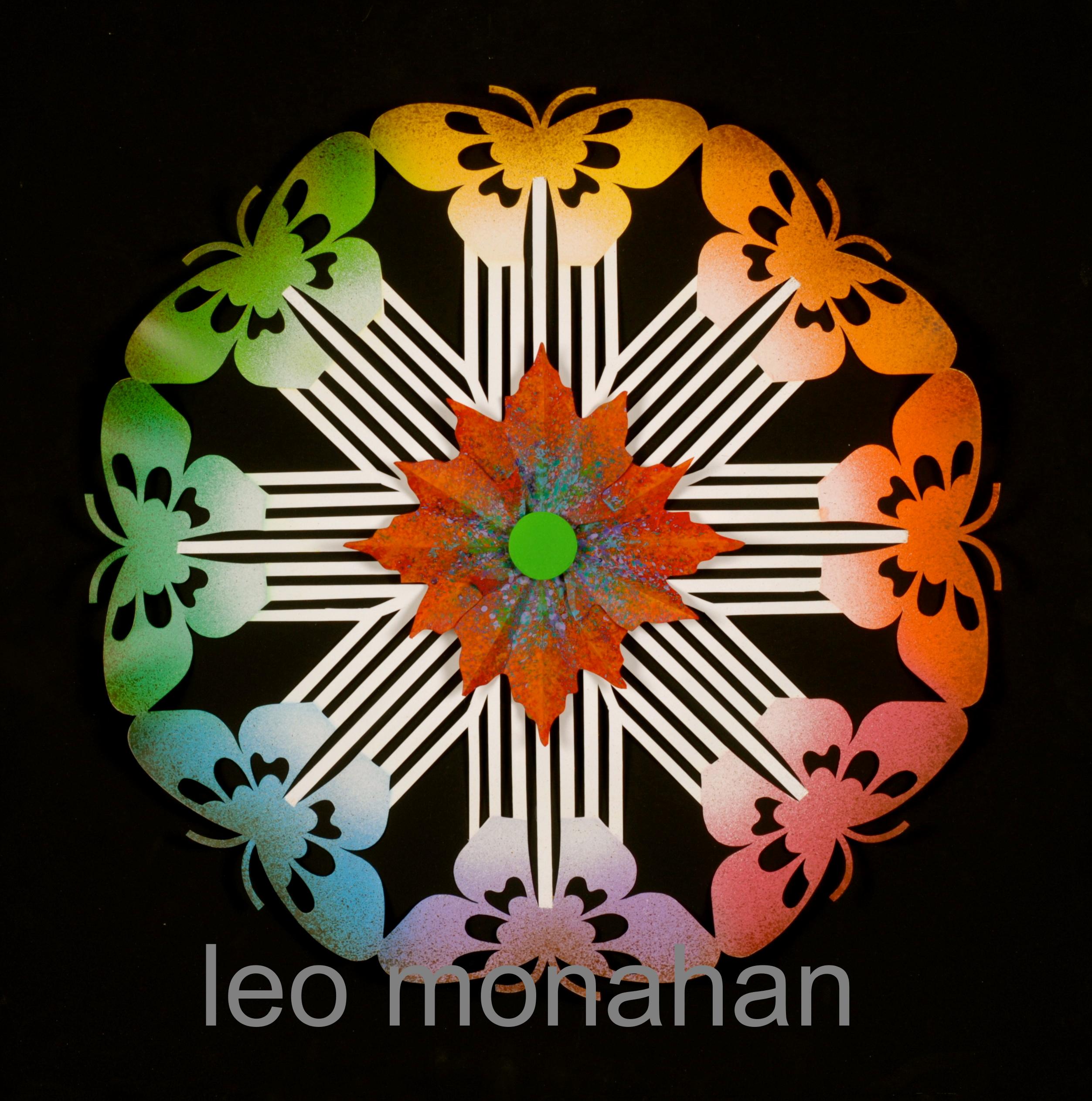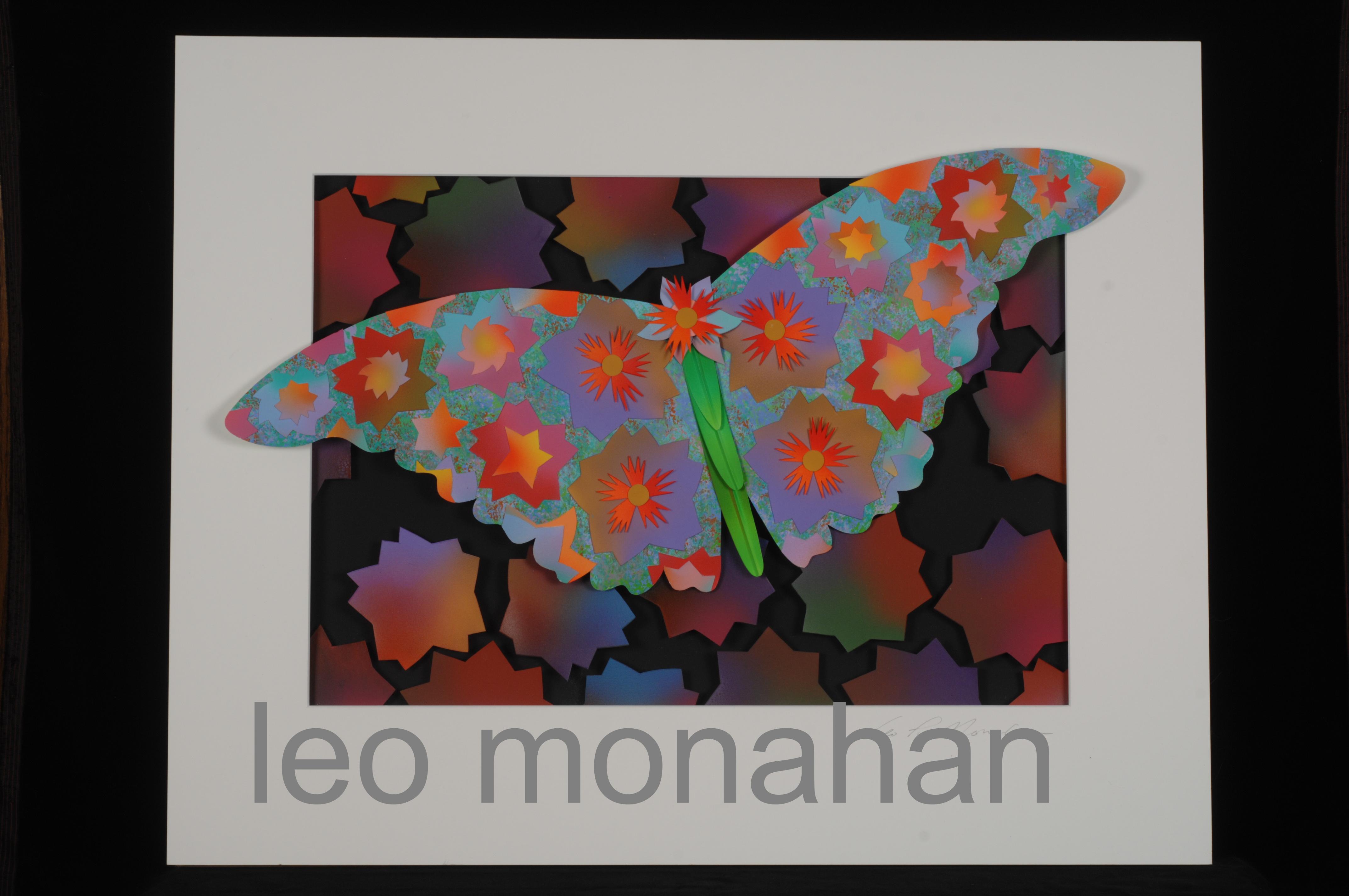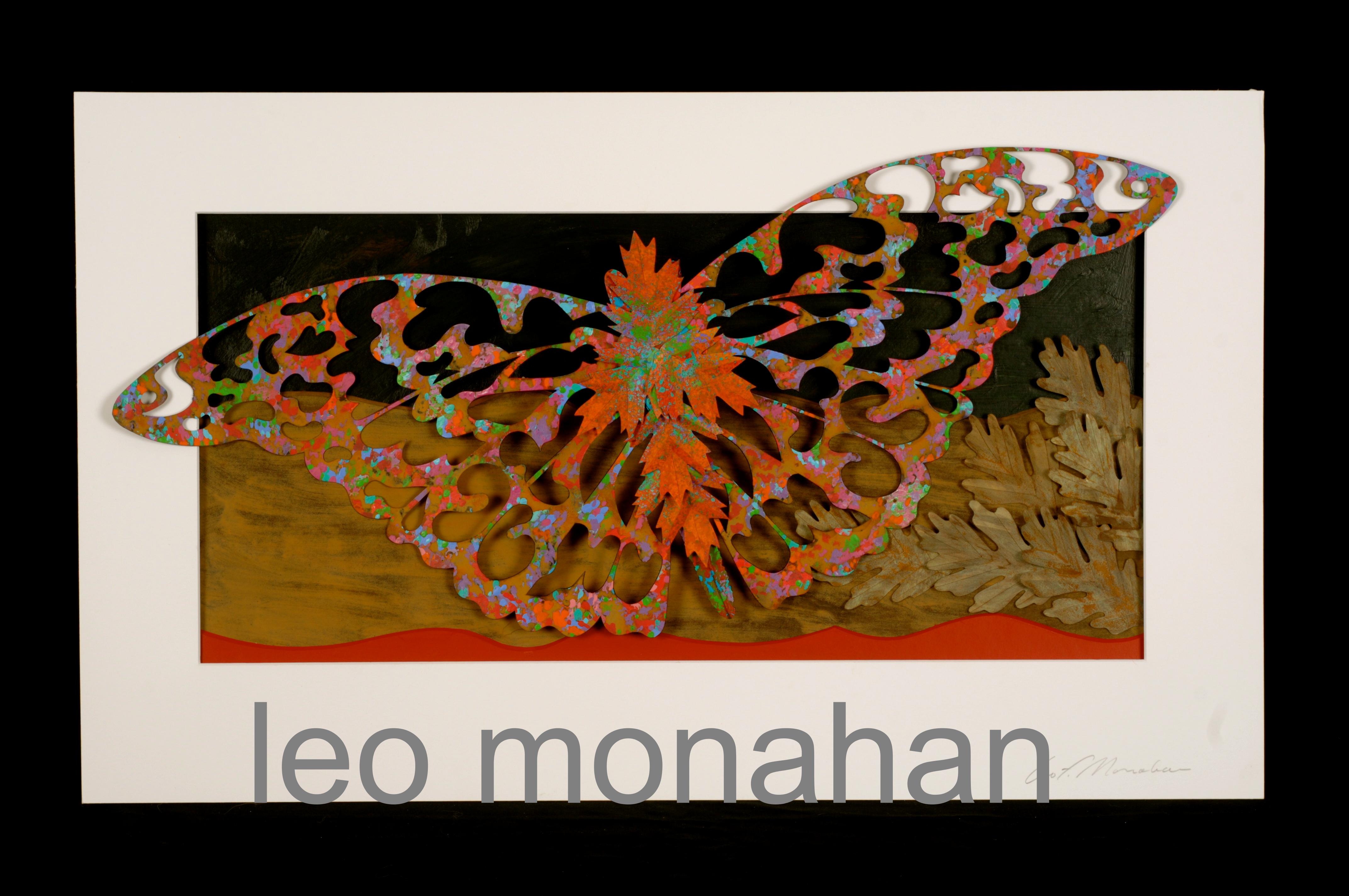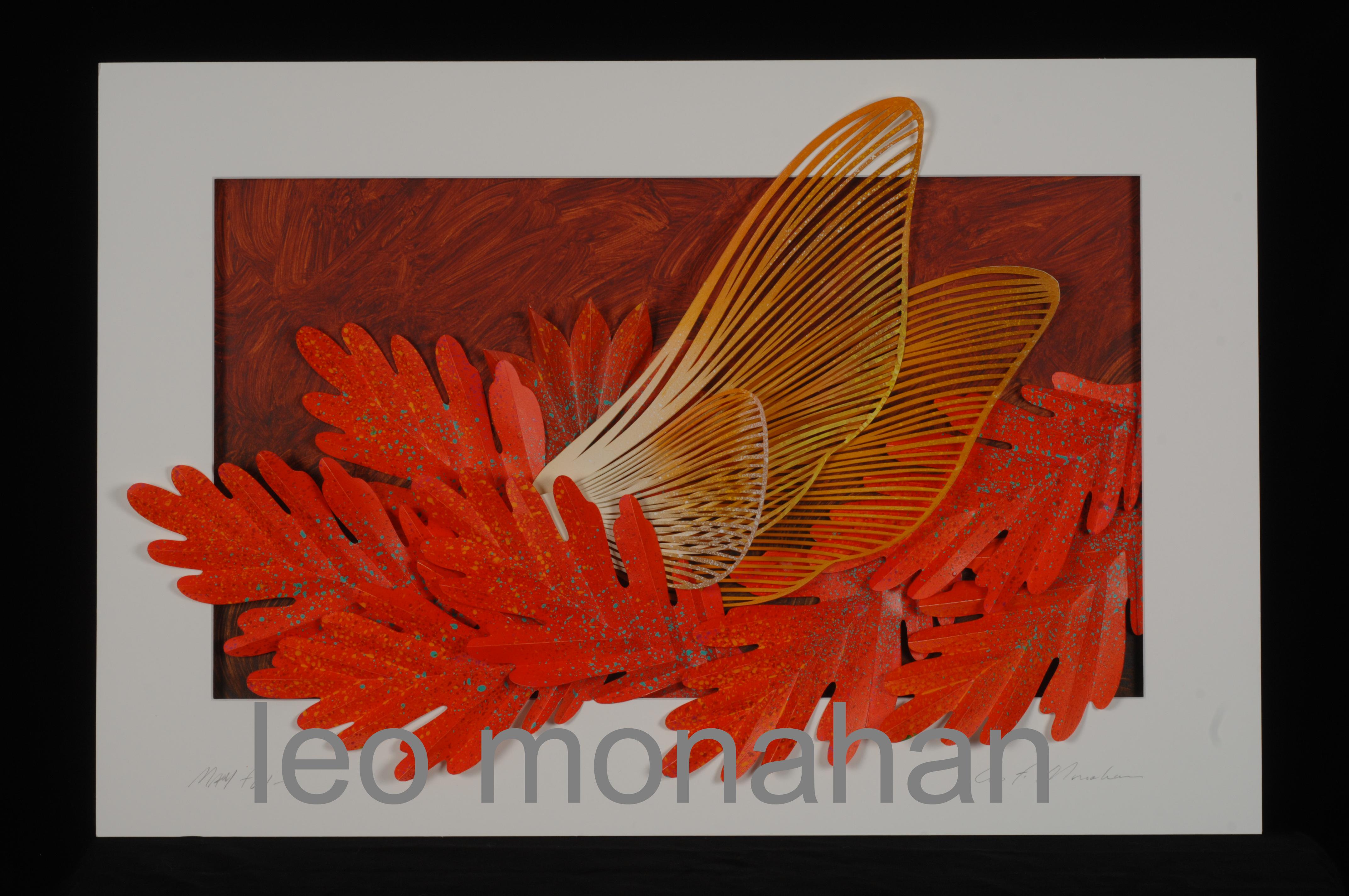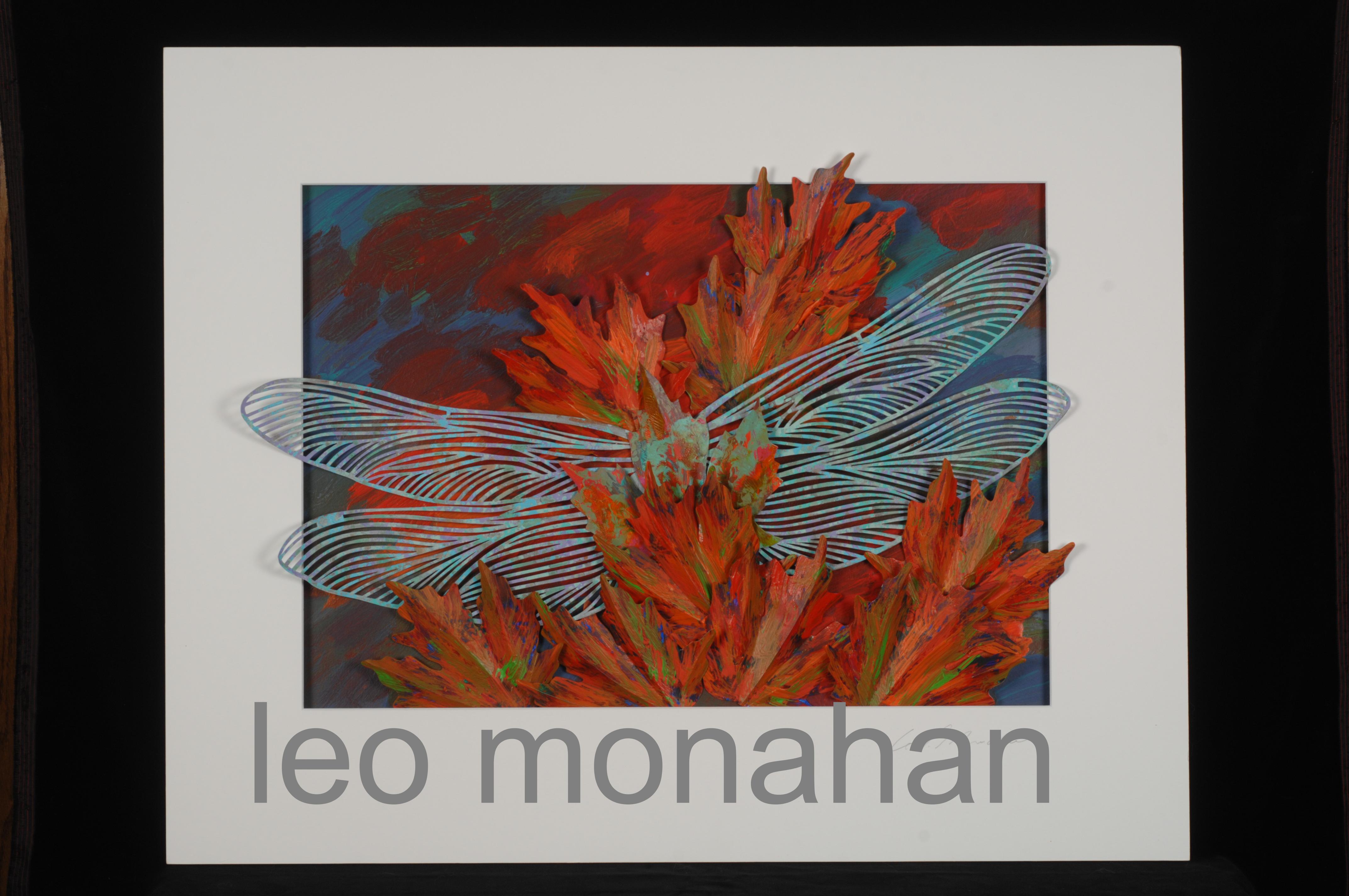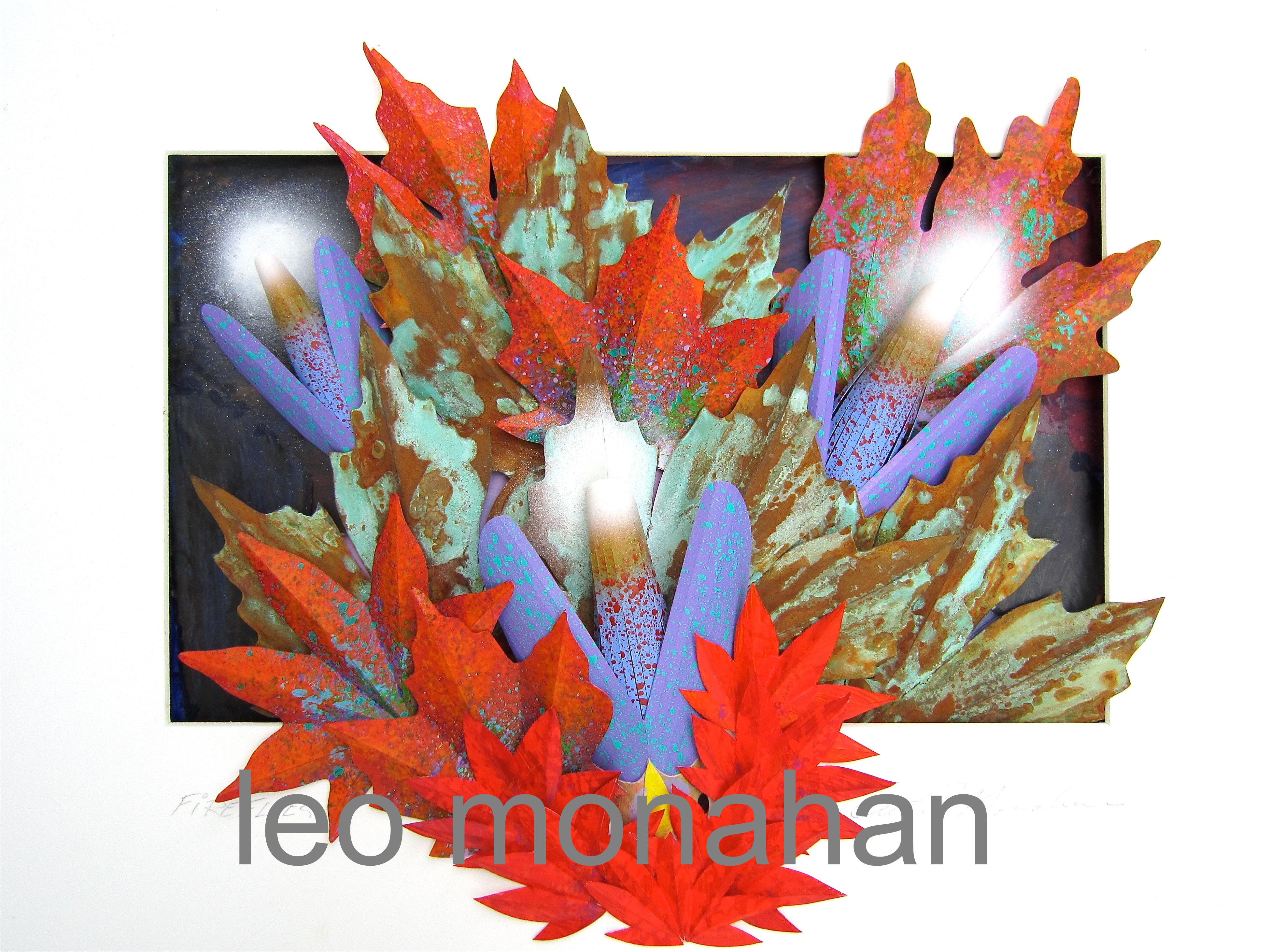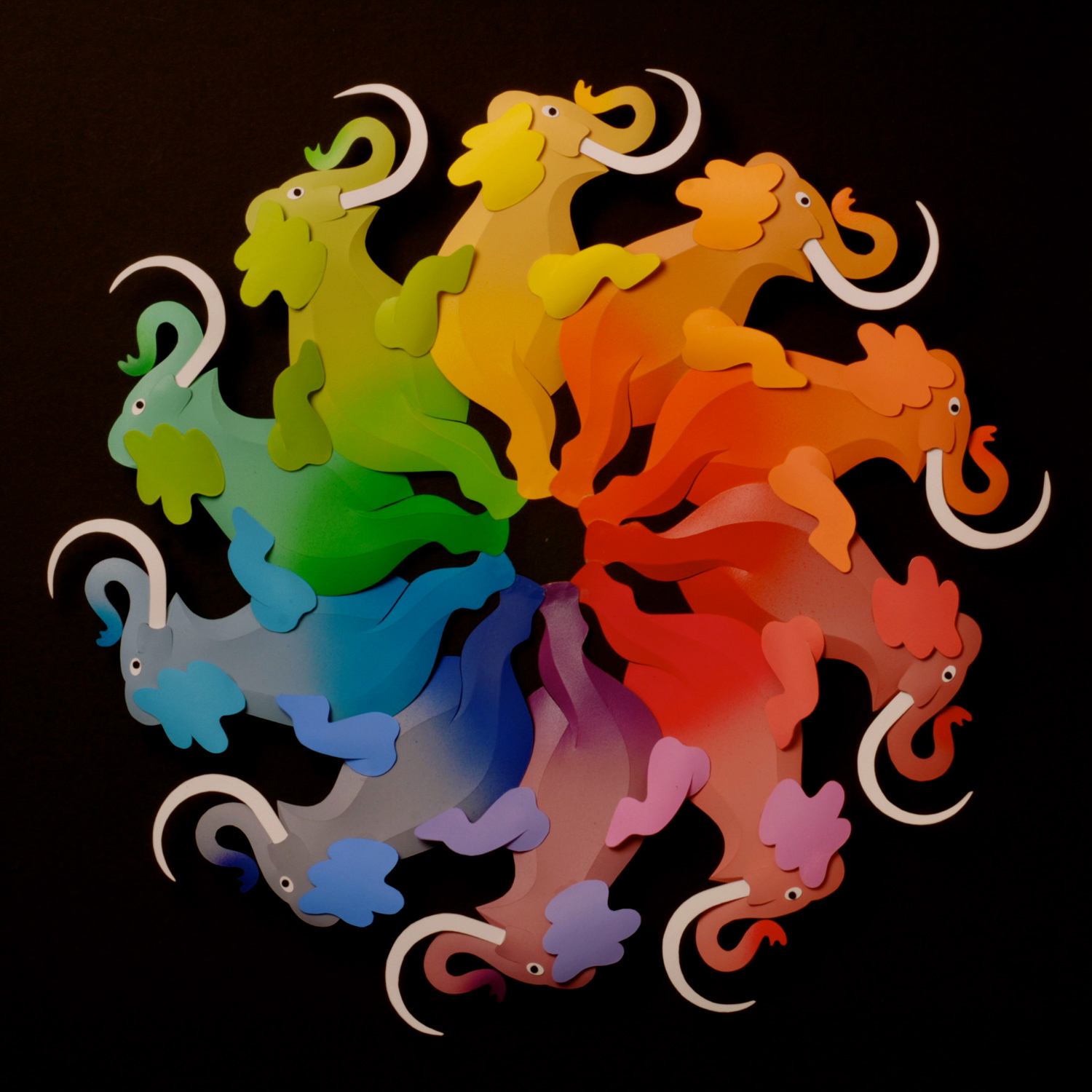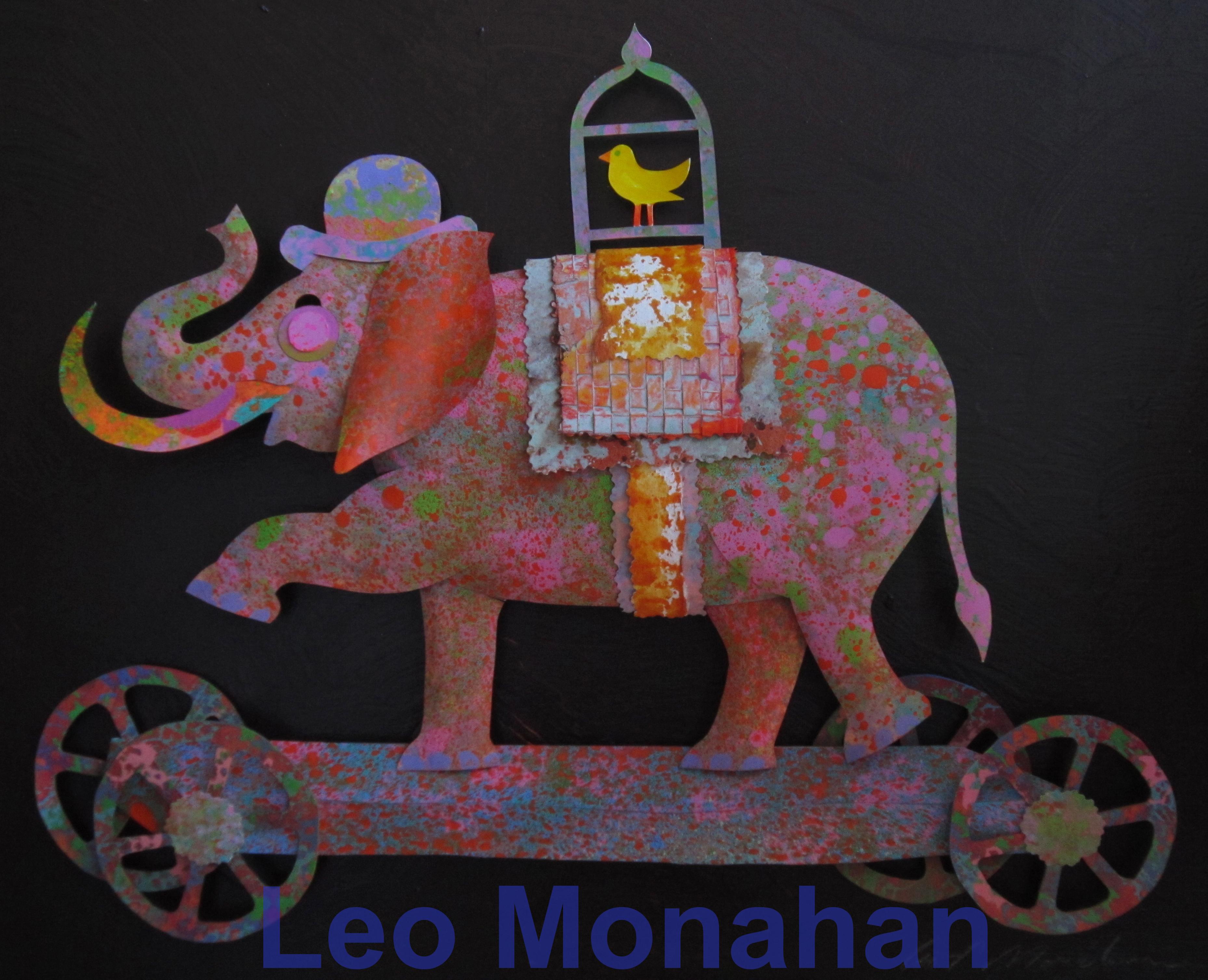Butterfly Bones
Yesterday I think I saw the last basic-black butterfly of the year, almost soot black, the absence of reflected light from a pigmented surface, no reflected color. Hello, Isaac Newton and the theory that color is light.
A few years ago my big dog Rocks died. As I buried his ashes under a dogwood tree with several other dogs and cats, a black butterfly fluttered by and landed on the fresh mound. It just looked at me and said, “Here I am, hombre.” (California talk).
Black butterflies seem to be around ever since then. I call them all “Rocks” and they don’t mind, but as they do every autumn they have vanished to escape the cold. Rocks and his sister Pebbles, weren’t winter weather dogs; they were lie-about canines from California’s sun without seasons.
This, “Butterflies Escaping Autumn” color wheel, is painted in 12 moderately tinted tones of the Ostwald and Itten color wheel that has been so important in my study and use of color for 55 years. A 12-hue color wheel, with a million or more possibilities.
These are the butterflies that migrate to the sunny climes of the far south, in this image, they leave the autumn leaf symbol in the center. The green dot is the promise of spring and rebirth and y’all come back. Y’hear…
During a busy, open studio day, a number of women looked at a large (30×40”) paper sculpture of an oak leaf in extravagant autumn colors. There was a small, elegantly patterned butterfly in the composition, and they all said, “Oh, I reeeeeally like that,” or something similar.
I told them that the leaf change was on, and if they went into the forest, they might find butterfly bones among the beautiful leaves. Wide eyed, they said, “Reeeeeally?” and I said, “Noooooooo.” They were so disappointed and said that they wanted to go look for the butterfly bones they were never told about in kindergarten butterfly classes.
Since they all thought it was an interesting idea, I decided to do a series on the bones of insects that die when the leaves change color. Among them were: butterfly bones, dragonfly and mayfly bones, bumblebee bones, small moth bones, firefly bones, and half a dozen others.
There are no such things as insect bones among the autumn leaves. However, that doesn’t mean they don’t exist inside my weird imagination. They’re in there along with a lot of other detritus. The image I show is my idea of mayfly bones among the leaves. I live in my own little world, but that’s ok. They know me there and it’s cheaper than reality.
Dragonflies are the most dramatic of all the bugs that I portray. Their wing bones stand out among the multi-colored maples and the palette of poplars. Delicate wings that were tough as cargo straps on an 18-wheeler, yet now the wings shatter like Marino glass at the slightest touch.
Lightning bugs, (A.K.A. fireflies) are the glamorous glowers that kids love to keep in glass jars until the lights or the game runs out. Fireflies arrive in early spring and endure until the terra firma really starts to cool down. I’ve seen a late loving lothario shine his stuff so late in the game that there wasn’t a female in the bar to watch him.
While I was producing these fragile winged bugs,I realized that no one would know what I was doing. Fortunately, I had met a poet, Richard Cary, and he agreed to do a poem about each one. We had plans to mount a show of “Butterfly Bones”; the poetry and a video of the project. Then the economic downturn happened and it got put on the proverbial back burner. Here’s a poem about lightning bugs, by Richard Cary.
Lightning Bug Bones
We drift about your backyard
traveling to and fro with lanterns
I remember
an amazing night meadow
we were too numerous to believe
I felt alone in outer space
suspended in the winking galaxies.
tonight
you see our lightning bug bones
weave and blink
at some imaginary corner
on some imaginary street
in some imaginary metropolis
we may appear bewildered baffled
as we zig zag through our choices
but we are constant miracles
encircled by loving cosmic laughter
we’re on the way
to nothing more than light
#
Thanks for visiting me…
leo
I’m never satisfied with what I know,
only with what I can find out.
My exhibit is still in its first month at the Grovewood Gallery in Asheville, NC. Click here if you are interested in my collage classes. New classes are being added for January and February.
Butterflies Flee Autumn color wheel $1000….Before The Fall $1650…
Butterfly Bones One $1850…Mayfly Bones $1600…
Dragonfly Bones $2000…Firefly Bones, sold…Butterfly Bones x5 $2500

